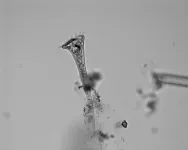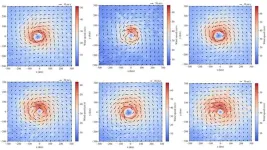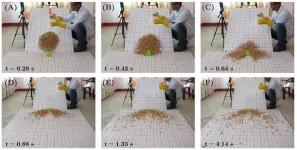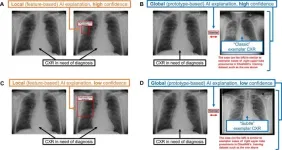Developing an antibody to combat age-related muscle atrophy
Utilizing rat muscle culture, researchers developed an antibody that prevents the age induced dysfunction of hepatocyte growth factor (HGF), a critical protein for skeletal muscle development, regeneration, and repair
2024-11-19
(Press-News.org)
Fukuoka, Japan—We all age. And while humanity’s life expectancy has increased dramatically in the modern era, we still struggle with the inevitable health issues our bodies face as we get up in the years. For example, the decrease of muscle mass and function, leading to weakness and atrophy. This is a pressing concern in a super-aging society like Japan where—while people live longer—without proper muscle strength, quality of life can be drastically diminished.
In findings that may eventually lead to targeted therapies that treat age-related muscle atrophy, a group of researchers from Kyushu University have developed a new antibody that targets and prevents the dysfunction of the protein hepatocyte growth factor or HGF: a critical factor in skeletal muscle development, regeneration, and repair. Their findings were published in the journal Aging Cell.
Muscle growth and regeneration occurs thanks to a population of stem cells called satellite cells. When you train your muscles, or get injured, these satellite cells are activated to form new muscle fibers. One of the key activators that tells satellite cells to build new muscle is HGF.
“Earlier this year, our team found out that HGF undergoes a process called nitration. This is when a molecule of nitrogen dioxide attaches to the amino acid tyrosine on the protein,” explains Professor Ryuichi Tatsumi of the Faculty of Agriculture who led the study. “This is a common modification we see in biology. However, we found that HGF loses its physiological activity when it becomes nitrated, and this phenomenon accumulates with age.”
Based on this, Tatsumi and his team wanted to find a way to block nitration on the HGF protein. One of the most effective ways of doing this is to develop antibodies that bind to the protein and block it from being nitrated in the first place.
“To be specific, nitration happens on the 198th and 250th tyrosine amino acid on HGF. So, using rat cell cultures, we developed and screened a series of antibodies that would specifically bind to these areas and block nitration,” continues Tatsumi. “After a series of tests, we found two candidate antibodies: 1H41C10 and 1H42F4N. Antibody 1H42F4N blocked nitration of the 198th tyrosine. Surprisingly, 1H41C10 blocked both tyrosine sites.”
Through further testing the team found that the new antibodies did not disrupt HGF activity itself, meaning it could still activate satellite cells.
The team is excited about their new findings and the significant potential it has in developing new treatments for age-related muscle atrophy along with other health condition related to impaired muscle regeneration.
“Of course, further work is needed before we see a use case in humans, but we are encouraged by the great potential our work has uncovered,” concludes Tatsumi. “HGF has numerous important functions in a variety of tissues and organs throughout the body. With further researcher we may be able to find other therapeutic applications of HGF in other pathologies.”
###
For more information about this research, see "In vitro immuno-prevention of nitration/dysfunction of myogenic stem cell activator HGF, towards developing a strategy for age-related muscle atrophy," Sakiho Tanaka, Alaa Elgaabari, Miyumi Seki, So Kuwakado, Kahona Zushi, Junri Miyamoto, Shoko Sawano, Wataru Mizunoya, Kenshiro Ehara, Naruha Watanabe, Yohei Ogawa, Hikaru Imakyure, Reina Fujimaru, Rika Osaki, Kazuki Shitamitsu, Kaoru Mizoguchi, Tomoki Ushijima, Takahiro Maeno, Takashi Nakashima, Takahiro Suzuki, Mako Nakamura, Judy E Anderson, Ryuichi Tatsumi, Aging Cell, https://doi.org/10.1111/acel.14337
About Kyushu University
Founded in 1911, Kyushu University is one of Japan's leading research-oriented institutes of higher education, consistently ranking as one of the top ten Japanese universities in the Times Higher Education World University Rankings and the QS World Rankings. The university is one of the seven national universities in Japan, located in Fukuoka, on the island of Kyushu—the most southwestern of Japan’s four main islands with a population and land size slightly larger than Belgium. Kyushu U’s multiple campuses—home to around 19,000 students and 8000 faculty and staff—are located around Fukuoka City, a coastal metropolis that is frequently ranked among the world's most livable cities and historically known as Japan's gateway to Asia. Through its VISION 2030, Kyushu U will “drive social change with integrative knowledge.” By fusing the spectrum of knowledge, from the humanities and arts to engineering and medical sciences, Kyushu U will strengthen its research in the key areas of decarbonization, medicine and health, and environment and food, to tackle society’s most pressing issues.
END
[Attachments] See images for this press release:
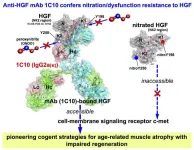
ELSE PRESS RELEASES FROM THIS DATE:
2024-11-19
“Brain aging is a biological process that comprehends degenerative, adaptive, and regenerative brain changes that elapse through maturity until the elderly.”
BUFFALO, NY- November 19, 2024 – A new review was published in Aging (listed by MEDLINE/PubMed as "Aging (Albany NY)" and "Aging-US" by Web of Science), on October 29, 2024, Volume 16, Issue 20, titled, ”Brain aging and Alzheimer’s disease, a perspective from non-human primates.“
In the review, Ferrer Isidro from the University of Barcelona and Reial Acadèmia de Medicina de Catalunya, explores the differences in ...
2024-11-19
Individual cells appear capable of learning, a behaviour once deemed exclusive to animals with brains and complex nervous systems, according to the findings of a new study led by researchers at the Centre for Genomic Regulation (CRG) in Barcelona and Harvard Medical School in Boston.
The findings, published today in the journal Current Biology, could represent an important shift in how we view the fundamental units of life.
“Rather than following pre-programmed genetic instructions, cells are elevated to entities equipped ...
2024-11-19
A dog learns to sit on command, a person hears and eventually tunes out the hum of a washing machine while reading … The capacity to learn and adapt is central to evolution and, indeed, survival.
Habituation — adaptation’s less-glamorous sibling — involves the lessening response to a stimulus after repeated exposure. Think the need for a third espresso to maintain the same level of concentration you once achieved with a single shot.
Up until recently, habituation — a simple form of learning — was deemed ...
2024-11-19
Viruses are lean, mean, infection machines. Their genomes are tiny, usually limited to a handful of absolutely essential genes, and they shed extra genomic deadweight extremely fast.
Usually.
Coronaviruses, including SARS-CoV-2 (the virus that causes COVID-19), appear at first glance to be an exception. They have some extra “accessory” genes in addition to the usual minimal viral set, and scientists don’t know what most of them do. Scientists believe these extra genes must be doing something important, though, or they would be rapidly lost as the viruses evolved.
Now, University of Utah Health researchers have found that some of these viral genes have stuck around ...
2024-11-19
WASHINGTON, Nov. 19, 2024 – Hurricanes, or tropical cyclones, can be devastating natural disasters, leveling entire cities and claiming hundreds or thousands of lives. A key aspect of their destructive potential is their unpredictability. Hurricanes are complex weather phenomena, and how strong one will be or where it will make landfall is difficult to estimate.
In a paper published this week in Physics of Fluids, by AIP Publishing, a pair of researchers from the City University of Hong Kong employed machine learning to more accurately model the boundary layer wind field of tropical cyclones.
In atmospheric science, the boundary layer ...
2024-11-19
WASHINGTON, Nov 19, 2024 – Champatis, the seeds of the Lapsi tree, are valued in Nepal for their medical, economic, social, and cultural significance. They are also popular among children as simple playthings. But for a group of physicists, these unique seeds—and the way they bounce and roll down slopes—could help them better understand landslides and avalanches, leading to research that could save lives.
In a study published this week in Physics of Fluids, by AIP Publishing, a team ...
2024-11-19
About The Study: In this cohort study of adults with outpatient medically attended-respiratory syncytial virus (RSV) infections from 3 large deidentified U.S. databases across 6 RSV seasons, approximately 1 in 20 adults experienced all-cause hospitalization within 28 days. The results of this study highlight the public health need for RSV prevention and treatment.
Corresponding Author: To contact the corresponding author, Joshua T. Swan, PharmD, MPH, email swan.joshua@gmail.com.
To access the embargoed study: Visit our For The Media ...
2024-11-19
In recent years, employers across North America have introduced or boosted equity, diversity and inclusion (EDI) programs in hopes of creating a more diverse and inclusive workplace culture.
But studies have shown that fostering diversity can come with a steep cost, as employees from dominant groups often felt threatened, leading to a backlash against the very groups the employers are seeking to support.
But could those feelings of threat also lead to learning and change, and eventually allyship? ...
2024-11-19
OAK BROOK, Ill. – Using data collected over a 10-year period from four emergency departments, researchers at the University of Toronto found that short-term exposure to ambient heat and air pollution levels was associated with increased utilization of X-rays and computed tomography (CT). Results of the study were published today in Radiology, a journal of the Radiological Society of North America (RSNA).
“Extreme climate exposures are associated with higher demand for health care including emergency department visits,” ...
2024-11-19
OAK BROOK, Ill. – When making diagnostic decisions, radiologists and other physicians may rely too much on artificial intelligence (AI) when it points out a specific area of interest in an X-ray, according to a study published today in Radiology, a journal of the Radiological Society of North America (RSNA).
“As of 2022, 190 radiology AI software programs were approved by the U.S. Food and Drug Administration,” said one of the study’s senior authors, Paul H. Yi, M.D., director of intelligent imaging informatics and associate member in ...
LAST 30 PRESS RELEASES:
[Press-News.org] Developing an antibody to combat age-related muscle atrophy
Utilizing rat muscle culture, researchers developed an antibody that prevents the age induced dysfunction of hepatocyte growth factor (HGF), a critical protein for skeletal muscle development, regeneration, and repair


